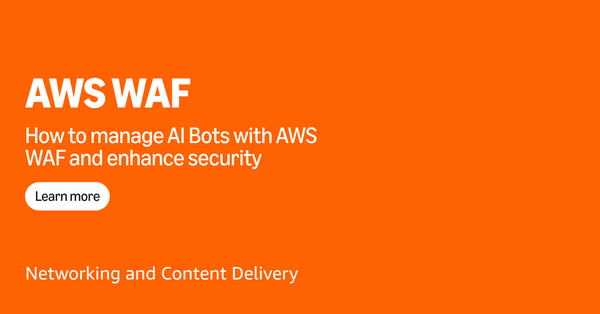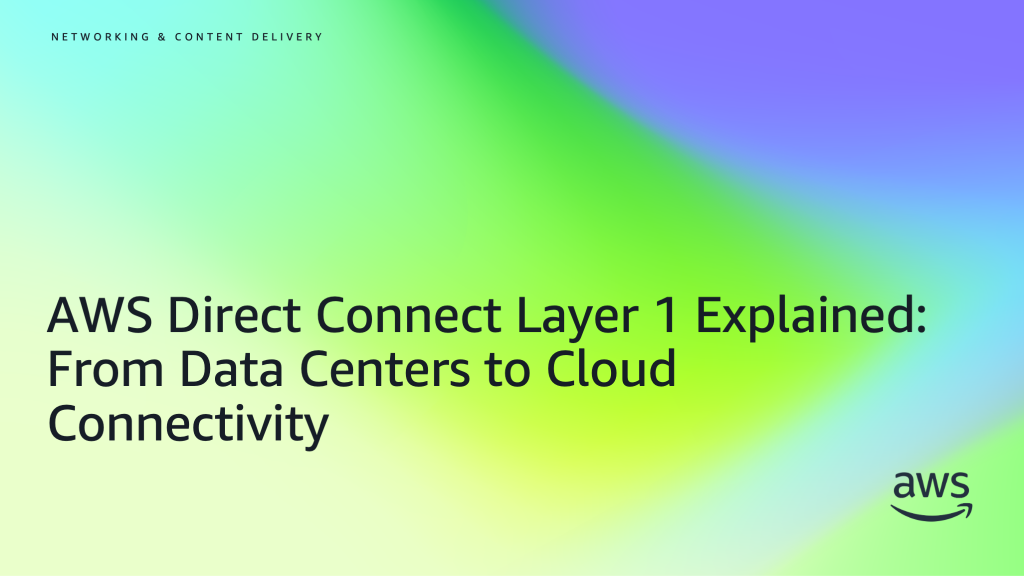Networking & Content Delivery
Enhancing Pinterest’s organizational security with a DNS firewall: Part 2
This post was authored by Ali Yousefi, Senior Security Software Engineer on the Infrastructure Security Team at Pinterest Introduction In part 1 one of this two-part blog series, we demonstrated how Pinterest gained visibility into DNS traffic originating from its VPCs by enabling Amazon Route 53 Resolver query logs across its Amazon Web Services (AWS) […]
Enhancing Pinterest’s organizational security with a DNS firewall: Part 1
This post was authored by Ali Yousefi, Senior Security Software Engineer on the Infrastructure Security Team at Pinterest Introduction Network security has become an increasingly important focus area in cloud security as more organizations shift to the cloud. Organizations can take an active approach in protecting themselves and their data from various threats by strengthening […]
Using CloudWatch Alarms and Lambda to catch exceptional traffic
Have you ever wondered, “Why did I have this sudden increase in network traffic?” AWS Transit Gateway Flow Logs are a great resource for answering this, but running them continuously can incur processing and storage costs that you don’t need. However, if Flow Logs are run on demand, the traffic anomaly may have already passed […]
Securing hybrid workloads using Amazon Route 53 Resolver DNS Firewall
Since its launch in 2021, Amazon Route 53 Resolver DNS Firewall has enabled Amazon Web Services (AWS) users to monitor and control outbound DNS queries originating from their Amazon Virtual Private Cloud (Amazon VPC) resources. Configuring domain filtering rules in Route 53 Resolver DNS Firewall helps you mitigate security threats such as data exfiltration through […]
How to manage AI Bots with AWS WAF and enhance security
Introduction The first web crawler was created in 1993 to measure the size of web, and they have now evolved into modern bots powered by agentic AI. Today’s internet is increasingly populated and dominated by automated AI bots that interact with applications to support AI-related tasks. We classified AI bots into three types: AI scrapers, […]
Using generative AI for building AWS networks
In today’s rapidly evolving cloud landscape, network architects, engineers, and cloud teams need to move faster to design, deploy, and manage complex Amazon Web Services (AWS) networking infrastructure at scale. The emergence of generative AI capabilities, particularly Amazon Bedrock and Amazon Q, offers unprecedented opportunities to transform how we approach these challenges and solve them […]
Securely Access Amazon FSx for Windows File Server using AWS Verified Access
Introduction In this post, I describe how to use Amazon Web Services (AWS) Verified Access (AVA) to securely access an Amazon FSx for Windows File Server file share. You will learn how to configure and deploy AVA endpoints, and connect to your FSx file share from your remote computer using the AVA Connectivity client. This […]
A Lemongrass success story: Enhancing Multi-Region SD-WAN failover with AWS Cloud WAN
Managing multi-Region network connectivity at scale is a critical challenge for modern enterprises. At Lemongrass Consulting, we enhanced our Amazon Web Services (AWS) network architecture by implementing AWS Cloud WAN. This implementation enabled intent-based routing between multiple AWS Regions while providing seamless on-premises integration through SD-WAN in our multi-Region AWS environment. Throughout this transformation, we […]
Streamlining multi-VPC DNS management with Amazon Route 53 Profiles and interface VPC endpoint integration
Managing DNS configurations across multiple VPCs and accounts requires thoughtful architectural planning, especially for organizations leveraging AWS PrivateLink interface endpoints for various AWS services. Organizations are continuously looking for ways to streamline these configurations while maintaining operational efficiency and security. For enterprises using Amazon Web Services (AWS) PrivateLink interface endpoints (such as AWS Lambda, Amazon […]
AWS Direct Connect Layer 1 Explained: From Data Centers to Cloud Connectivity
In today’s cloud-first world, resilient connectivity between your on-premises infrastructure and AWS, along with a deep understanding of its implementation, is critical for your business success. For many organizations, AWS Direct Connect serves as their primary connectivity solution. Starting at the physical layer (Layer 1), it operates across the first three layers of the Open […]









